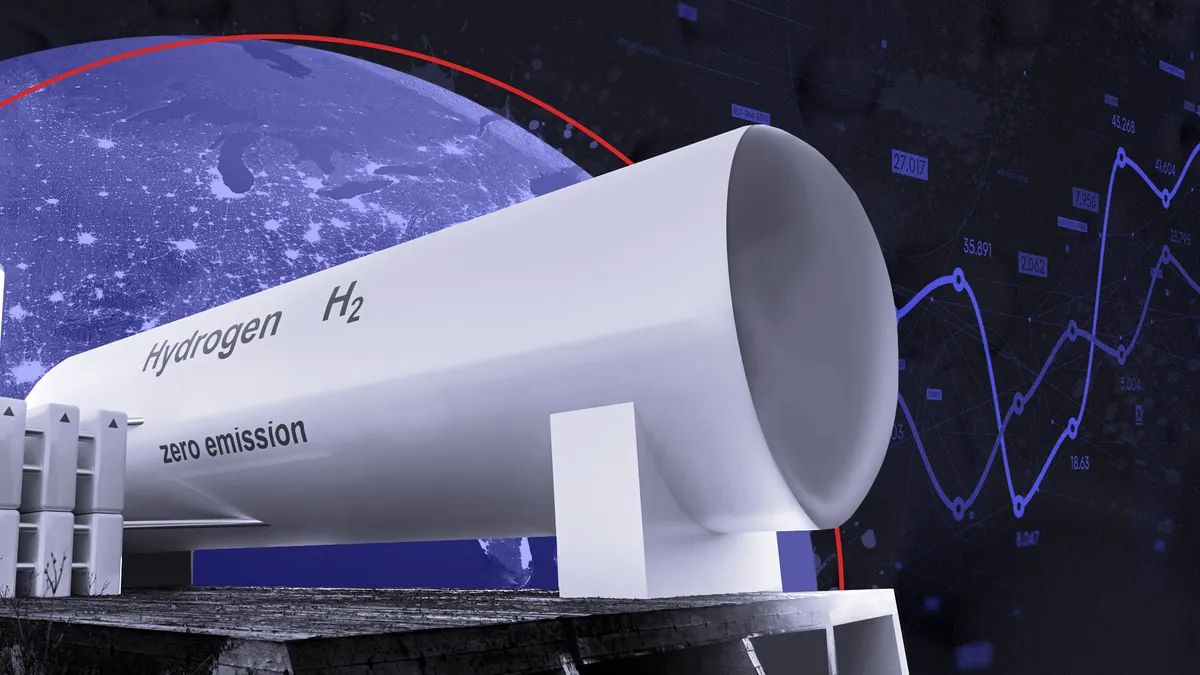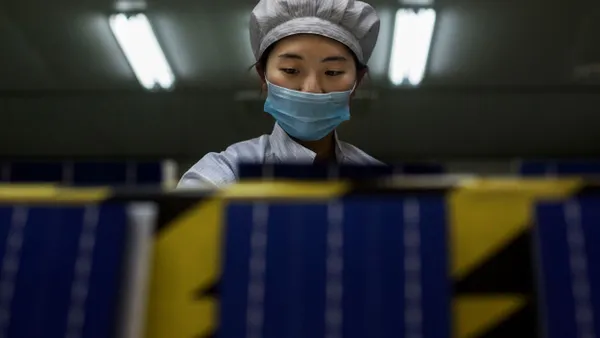Dive Brief:
-
A fuel-flexible linear generator that uses low-temperature reactions, rather than combustion, to generate energy has passed key tests demonstrating its ability to run on 100% ammonia or hydrogen, according to the device’s manufacturer Mainspring Energy.
-
The linear generator had already demonstrated an ability to generate electricity from fuels such as natural gas or renewable biogas without generating NOx. But a growing number of customers hoped to pair the generator with emerging low-carbon fuels like hydrogen, according to Mainspring founder and CEO Shannon Miller.
-
The generator currently represents a potential low or no carbon alternative to backup power generators, but Miller said the company is also working to scale up their product in response to interest from utilities.
Dive Insight:
The linear generator, a product initially designed to provide low-emission support to intermittent energy sources like wind and solar, could be even more useful to decarbonization efforts after a series of tests announced this week.
The linear generator uses a low temperature reaction, rather than combustion, to extract energy from gaseous fuels. Mainspring already has linear generators in the field operating on natural gas or biogas, Miller said, but with customers increasingly asking about emerging fuels like hydrogen and ammonia, the startup saw a potential opportunity.
The company’s generators contain a series of programmable oscillators that can be repositioned to switch between different kinds of fuel, Miller said. As demonstrated by the test results announced this week, she said, a modification to the generator’s software would allow the device to utilize either 100% hydrogen or ammonia as a fuel source. The company plans to begin shipping the hydrogen-enabled generator units next year.
Current units have a 230 kW capacity, though the units are modular and can be currently combined for a total installation of 10 MW or more, Miller said. Many of Mainspring’s current customers use the generators to replace diesel-powered backup generators at commercial sites such as refrigerated warehouses, Miller explained.
Some of these customers have also made zero-carbon commitments and hope to transition to zero-carbon backup power in the future, Miller said. But zero-carbon fuels like hydrogen are not yet available in all areas, prompting a need for fuel flexibility.
“Customers don’t want to buy something that can only run on natural gas or diesel because then they’re stuck with it, but hydrogen is not available at a lot of facilities,” Miller said. Updating their product to support clean fuels, she said, “allows customers to buy the unit today, and continue to optimize for cost and carbon over the life of the unit.”
Mainspring also sees potential applications beyond the current backup power use case, Miller said. As the amount of wind and solar on the grid continues to increase, she said, attention has begun to turn toward the need for a source of carbon-free, dispatchable energy resource to firm up reliable energy supply. Although she said they’re not ready to discuss the details, Miller said Mainspring has begun work on scaling up its technology to serve as a potential grid resource. These efforts include a $150 million financing agreement with NextEra Energy Resources that was announced in March 2021.
“The problem we’re solving at Mainspring is that the grid today is still 60% oil, gas and coal, and that oil, gas and coal provides a lot of resilience,” Miller said. “That’s the problem we solve — to help customers firm their solar and wind.”
Editor's note: We have updated the story to clarify that Mainspring reports it is working on expanding the upper limit of its combined installations.














